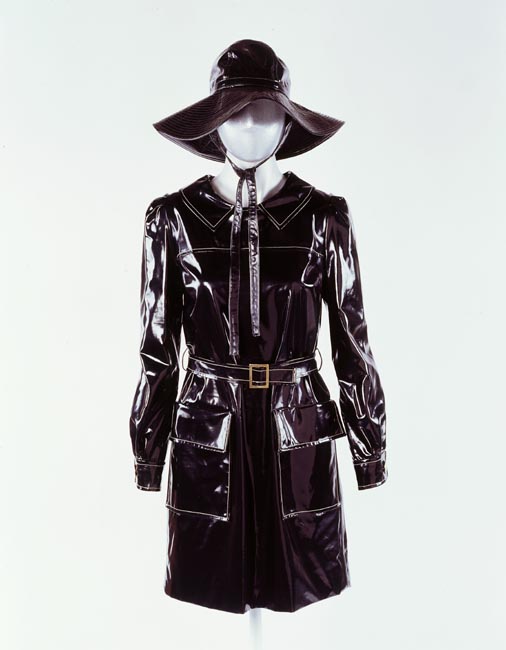Mary Quant was a London fashion designer in the 1950s and 60s. She is credited with conceiving mini-skirts and hot pants, and developing the mod style during a time when London fashion was defined by youth and popular culture. In 1966, Quant was awarded an O.B.E. for services to the fashion industry.
Mary Quant was born in Blackheath in London in 1934. Quant studied art education and illustration at Goldsmiths College of Art, where she met her future husband and business partner, Alexander Plunket Greene. Together with businessman Archie McNair they opened their first boutique, Bazaar, on the King’s Road, Chelsea, in October 1955. Quant began designing unusual clothes that greatly appealed to the emerging youth market. The designs were simple, elegant and had clean lines; they were often made using fabrics such as gingham. Quant also sold accessories and jewellery made by students at the London art schools.
The second Bazaar shop opened in Knightsbridge in 1957. Both stores had striking window displays, with the mannequins set in quirky, unusual poses. Quant socialised with painters, architects, writers and actors, and Bazaar became both a social and a retail space for the fashionable Chelsea Set of ‘Swinging London’. This mixture of fashion and popular culture characterised London fashion at that time.
During the 1960s, the mini-skirt controversially arrived on the fashion scene. Although the mini is often attributed to Quant, another designer, André Courreges, also developed it. Quant definitely made the mini-skirt considerably shorter than other designers did, and it was instantly popular with young London women. In addition to the mini-skirt, Quant is often credited with inventing the coloured and patterned tights that tended to accompany the mini.
Quant’s clothes were not cheap, but were sought after and popular. By 1963, she was exporting to the United States for sale in J.C. Penney department stores, and using clever merchandising. She moved into mass-production that year and launched the Ginger Group to distribute her cheaper designs, including her first experiments with clothing made of PVC. Shortly afterwards, Quant cosmetics and underwear were introduced. These were marketed using the famous Quant daisy design. At this time, Quant was described as the leading fashion force outside Paris.
In the late 1960s, Quant’s last major fashion development was the introduction of hot pants. Through the 1970s and 80s, she concentrated on cosmetics and household goods. In 2000, a Japanese company bought Mary Quant Limited, and Quant resigned as director. There are now over 200 Mary Quant Colour shops in Japan, where Quant fashions have remained popular.
Mary Quant stood out not only because she was an innovative designer, but also for her style and ethos. Without the usual business backing, and ignorant of the industry, Quant had the freedom to change and adapt as she worked. Quant was pursuing her vision, not building a business, and was an inspiration to many later designers.








